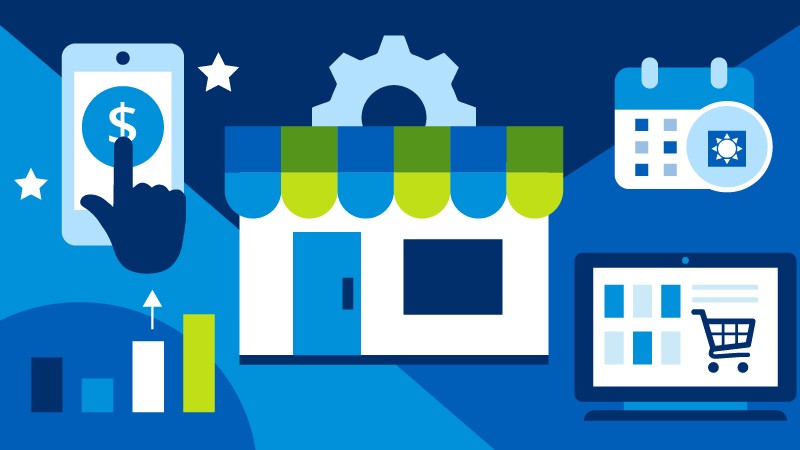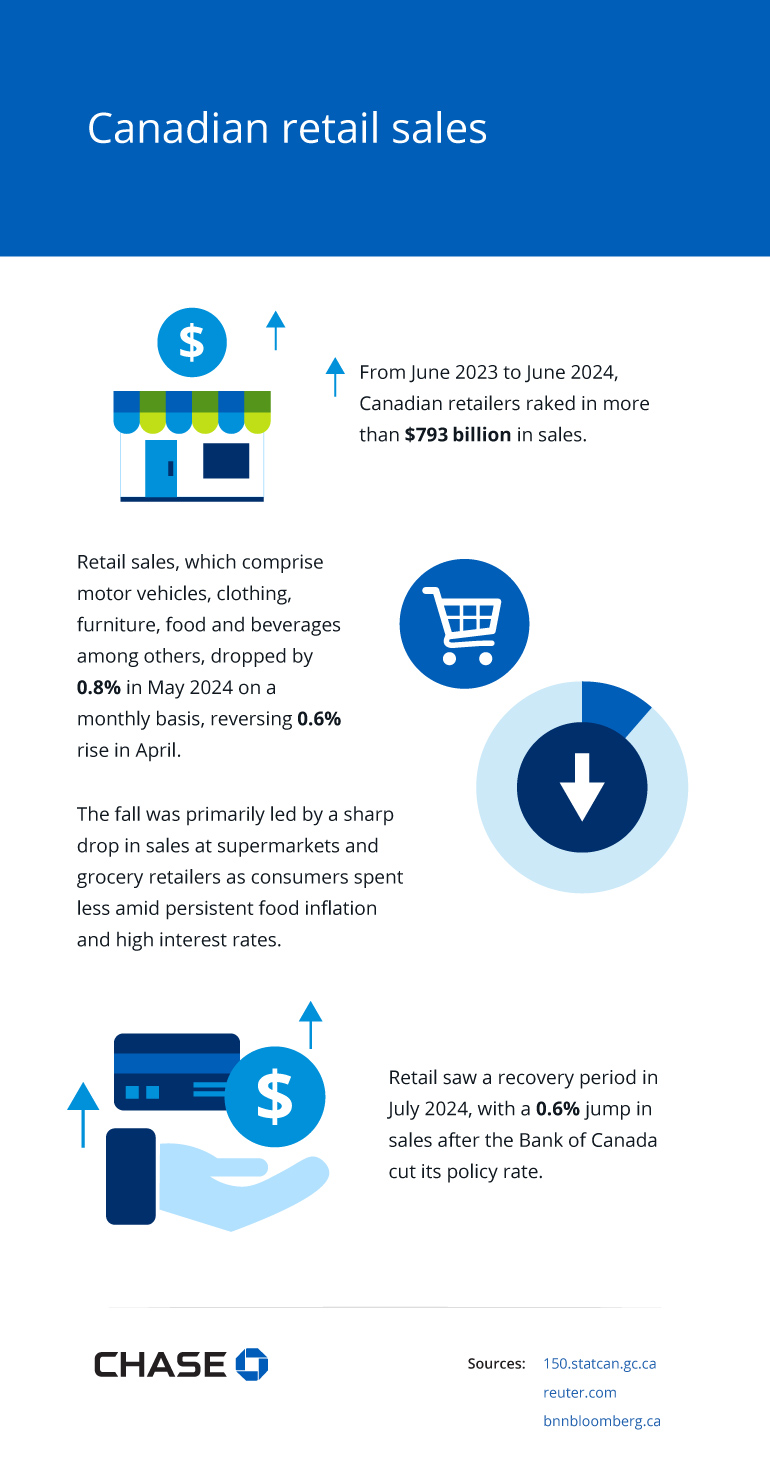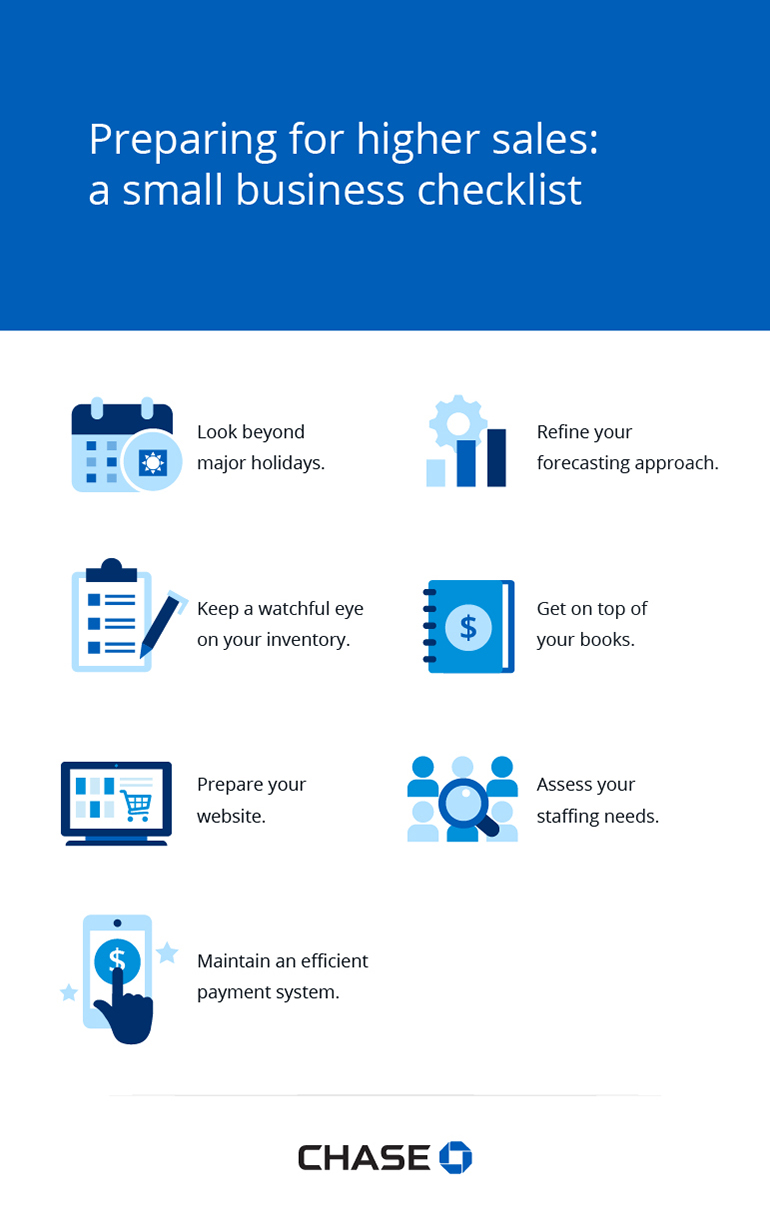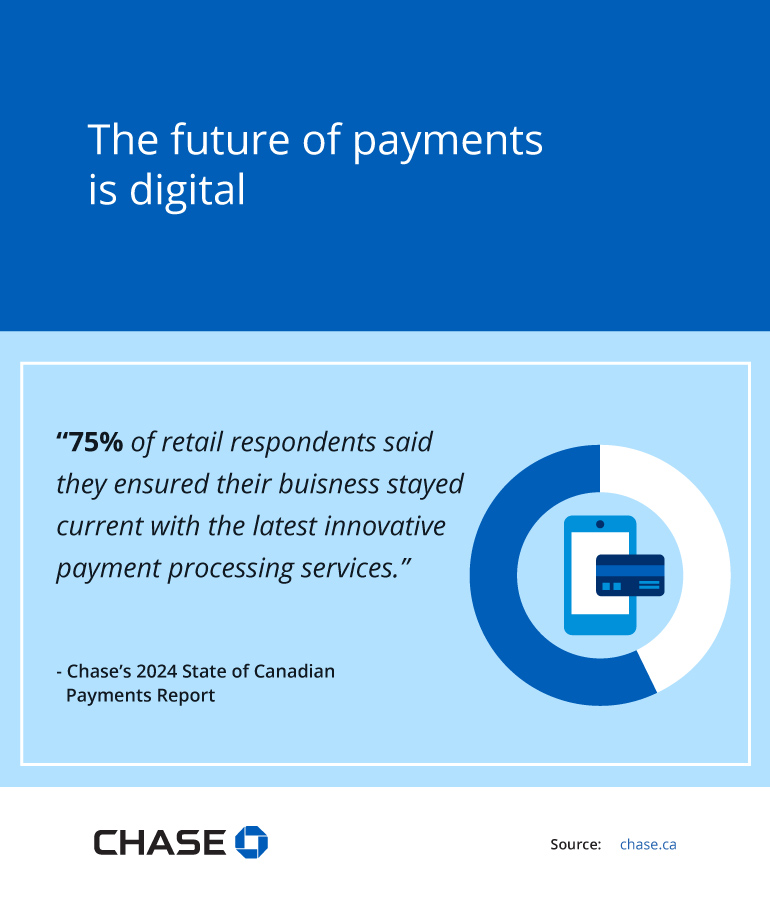When the forecast calls for higher sales, prepare your team and your business
By Nicole McDermott

As a small business owner, you have probably dreamed of increasing your web traffic and growing your team. Thankfully, major holidays and special events present the perfect platform to generate buzz about your business and meaningfully bump up your sales — whether you’re new to the business world or not. However, to stay the course through these high-growth periods, you will need plenty of thoughtful preparation, effective forecasting, and maybe even a few extra sets of hands.
Curious to learn more about preparing your business when those influxes in sales come knocking? Keep reading to discover our top tips for success through a higher sales forecast.

From June 2023 to June 2024, Canadian retailers raked in more than $793 billion in sales.
Retail sales, which comprise motor vehicles, clothing, furniture, food and beverages among others, dropped by 0.8% in May 2024 on a monthly basis, reversing a 0.6% rise in April.
The fall was primarily led by a sharp drop in sales at supermarkets and grocery retailers as consumers spent less amid persistent food inflation and high interest rates.
Retail saw a recovery period in July 2024, with a 0.6% jump in sales after the Bank of Canada cut its policy rate.
Sources:
How to prepare when sales forecasts trend upward
Consider the following jumping-off points when preparing your team for busy days and seasons.
Look beyond major holidays
When we talk about higher-sales periods, the first thought that comes to mind is probably the holiday season. But what about other sources of retail spikes? For instance, retailers in Banff may need to adjust inventory and staffing during peak hiking season in the summer or peak ski season in the winter. Meanwhile, cafés on the outskirts of the Metro Toronto Convention Centre may plan to extend their hours for large conferences that start bright and early. Take note of special events that may impact the industry you’re in and usher more customers through your doors or to your website.
Refine your forecasting approach
When it comes to sales forecasting, make sure you factor in internal trends (such as your sales from last year’s holiday season) as well as changing market conditions (such as inflation).
On the topic of market trends, it’s worth noting the notable shifts in e-commerce and in-store transactions we’ve seen in recent years. While total retail sales and in-person shopping took a major hit in 2020, e-commerce has solidified its standing in the Canadian retail landscape. E-commerce saw record highs in 2021, followed by a slight dip, and then a surge over 4 billion in total sales in April 2024. On the flip side, in-store shopping may continue to see promising shifts as the Bank of Canada announces rate cuts. Take notice of the demographics of your customers and generational market trends, too. For example, PwC Canada’s 2023 Canadian Holiday Outlook reported that Gen X consumers remain the highest overall spenders around the holidays.
In short, gaining a better understanding of buyers’ shopping behaviours can help you more accurately forecast your sales — and determine where to focus your efforts — leading up to a peak. If you don’t have in-house finance or research teams, consider hiring a financial analyst and/or market research professional to help assess how your demand, industry conditions, internal policies, marketing trends, and more will influence your business during higher-sales days.

- Look beyond major holidays.
- Refine your forecasting approach.
- Keep a watchful eye on your inventory.
- Get on top of your books.
- Prepare your website.
- Assess your staffing needs.
- Maintain an efficient payment system.
Keep a watchful eye on your inventory
While you likely keep tabs on your inventory year-round, it’s crucial to be extra vigilant when you’re expecting an uptick in sales. The last thing you want is to miss out on sales or be stuck with costly excess stock because of a miscalculation in inventory needs. Instead, evaluate your current setup, systematize inventory replenishment, and take the time to adjust to customer behaviour. Not sure where to start when it comes to keeping your stock levels straight? Investing in comprehensive inventory management software can help you more accurately project your inventory needs and save money.
Get on top of your books
Cleaning up your inventory practices goes a long way — and so does tidying your records. During a busier-than-usual stretch, when every department from sales and customer service to marketing and branding feels overextended, it’s easy for small, yet important, bookkeeping details to fall through the cracks. For small businesses that don’t have an in-house accounting team, it’s helpful to ask an outside accountant for bookkeeping guidance ahead of and during high-traffic periods. (If you’re on the tech-savvy side, you could also download accounting software.)
For starters, it’s a good idea to plan for new expenses that may crop up for a big event, such as hiring additional staff or upgrading your hosting plan to accommodate higher site traffic.
Prepare your website
Speaking of accommodating higher site traffic, if you sell anything online, it’s important to prepare your digital store just like you would for a brick-and-mortar one. If you plan to sell new products, build in plenty of time to load each item onto your site (and craft helpful item descriptions), update your inventory accordingly, audit your site for any errors or customer journey pain points, review and adjust your checkout process, optimize your site for mobile, and so on. If these skills exist outside of your wheelhouse, you’re not alone. Ahead of a high-sales period, such as Black Friday, consider working with a team of vetted web developers to improve your e-commerce site experience so you can focus your efforts on other important areas of your business that need your expertise most.
Assess your staffing needs
During busy days, it’s not just about having enough people on staff to manage higher traffic, it’s also about ensuring you’ve successfully trained and prepared them — whether you run your business in-store, online, or both. Beyond reserving adequate time to catch new employees up to speed, you’ll also want to keep certain considerations in mind for temporary workers during well-established busy seasons, such as the holidays. For instance, it’s crucial to put season-specific expectations and contract terms in writing, such as an agreement to work on public holidays. On that same note, it’s important to understand and prepare for higher wages for staff members who clock in on public holidays.
Maintain an efficient payment system
One of the most straightforward ways to bolster your small business during busy seasons is to accept payments in a wide variety of ways that make it as easy as possible for your customers to purchase the products or services you offer.
In a matter of decades, cash regressed from being the primary form of payment to one of the lesser-used options. According to the latest Canadian Payment Methods and Trends report from Payments Canada, cash usage over the last five years has declined 40%. And as consumer preferences and needs shift toward convenience and efficiency, retailers are keeping up. According to our 2024 State of Canadian Payments report, 75% of retail respondents said they ensured their business stayed current with the latest in innovative payment processing services, including mobile wallet and biometric payments.
For those reasons, it’s vital that you offer quick and easy ways to pay, including secure, hassle-free credit card processing, which will help inspire trust and confidence in your customer base.

“75% of retail respondents said they ensured their business stayed current with the latest in innovative payment processing services.”
- Chase’s 2024 State of Canadian Payments Report
Sources:
Conclusion
While holidays and big events can undoubtedly present a battery of stressors to your small business, the influx in sales they bring may amplify your brand, increase your confidence as a small-business owner, and ultimately, impact your bottom line in a positive and lasting way. Keep these simple but effective starting points in mind when preparing your team and business for peak sales periods.